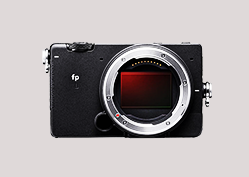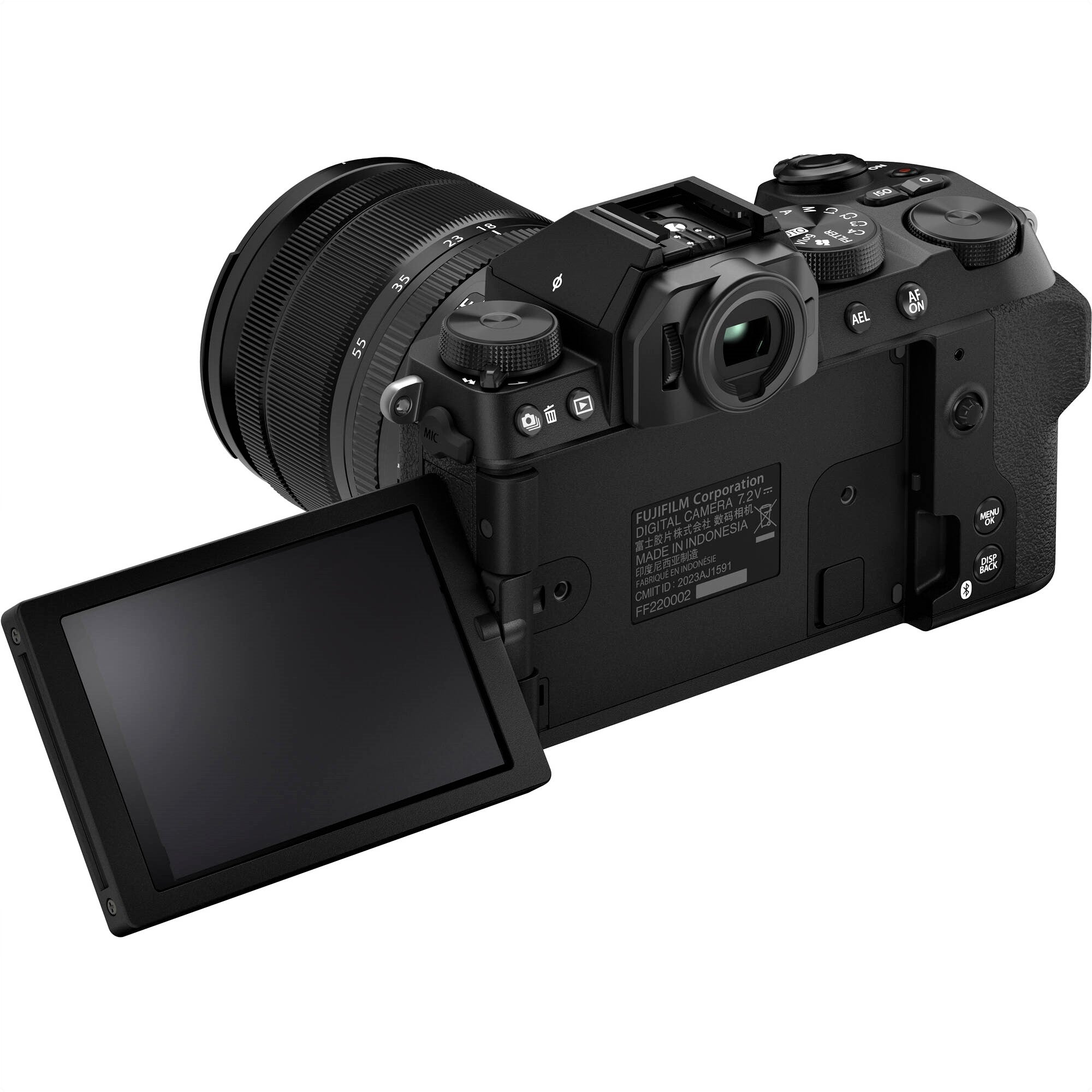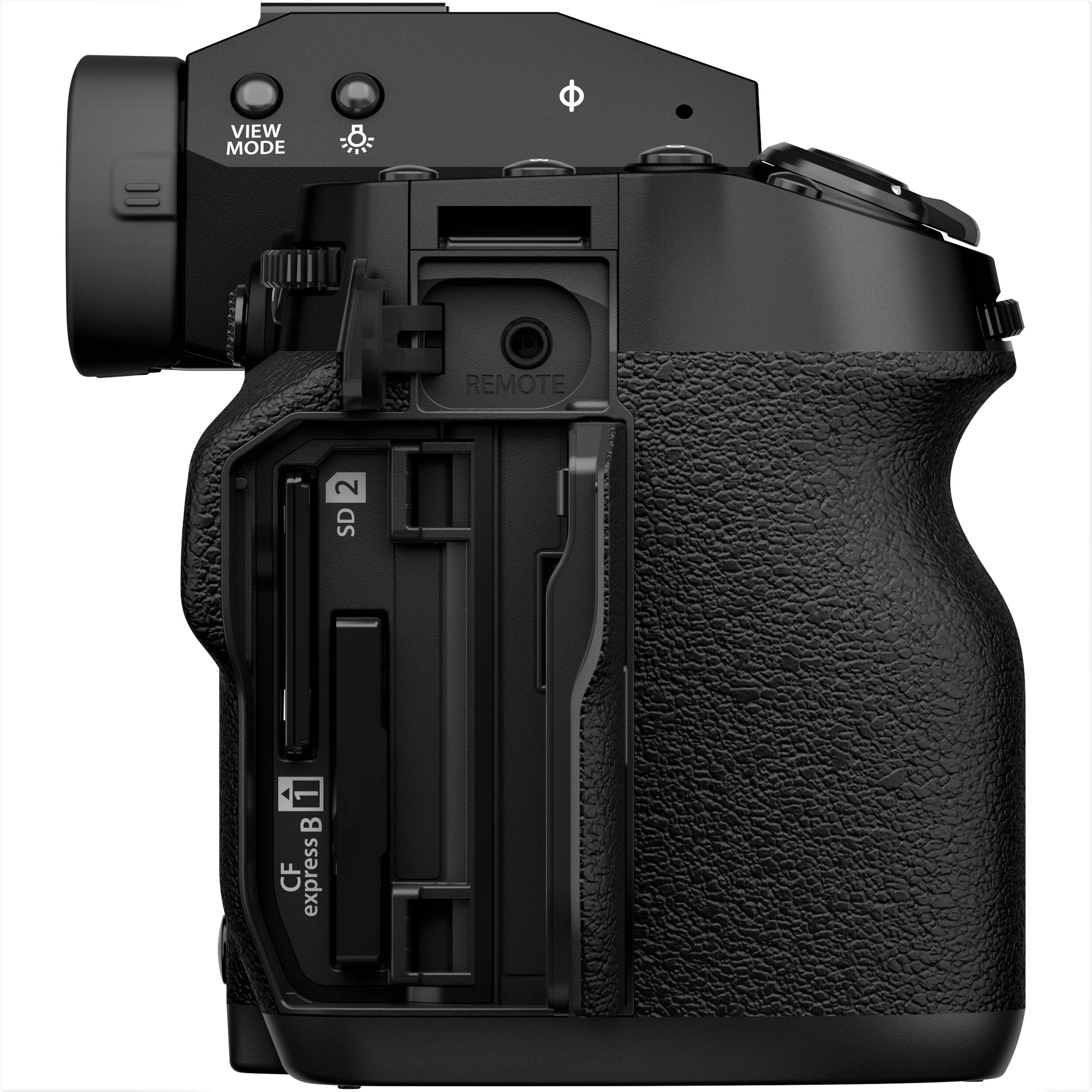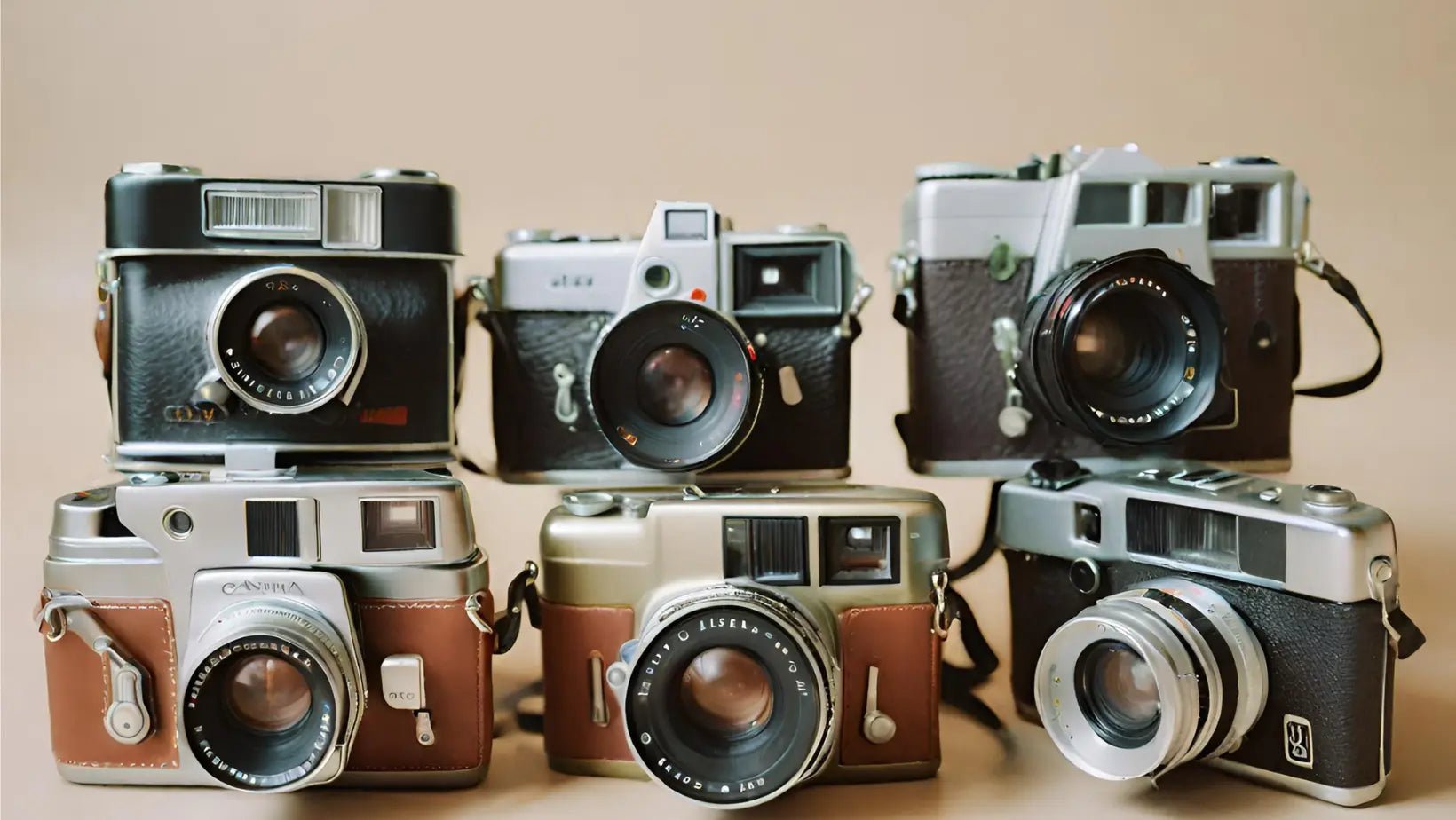Best Cameras for Sports Photography
The world of sports photography, where your camera is your ticket to front-row excitement. This field is about capturing pure, unscripted moments of athletic prowess and raw emotion.
Picture a runner's stern concentration or the sheer elation of a last-minute score. Sports photography is more than taking shots—it's storytelling through your lens, depicting the dramatic peaks and troughs of sports with clarity.
In 2025, picking the right camera for sports photography is simple. Look for features that bring your pictures to life with vivid detail and vibrant storytelling. Fast action shots? Crystal clarity is essential. Outdoor events? Durability matters.
We've got you covered with the top cameras designed to shine in any scenario. Each click captures a story, bright and clear.
Introduction to Sports Photography
Sports photography is exciting. It captures the peak of human performance. Photographers need agility and quick reflexes, like the athletes they photograph. It's not just about fast shutter speeds or the right camera. You need to anticipate action and understand the game's rhythm. Being in the right place at the right time is crucial. Each photo tells a story of effort, victory, or loss. It's important to capture the moment and the emotions around it.
To excel in sports photography, you must make quick decisions. This often happens under difficult lighting. Whether in a bright stadium or a dim gym, you must adjust your camera settings. This keeps images sharp and well-exposed. You need a good understanding of ISO levels, aperture, and shutter speed.
Predicting where the action will occur is key. This ability comes with experience and knowledge of the sport. By choosing the right spot, you can capture unique angles and moments. Timing is essential to photograph the peak action moment.
Great sports photographers also tell stories through their lenses. It's not just about capturing the action. The determination on the athletes' faces, the crowd's reactions, and the overall drama are important. These elements make you more than just a viewer. You become a storyteller.
In conclusion, sports photography combines skill and technical knowledge with instinct and passion. By mastering both the technical side and the sport's narrative, you can capture more than just images. Your photos resonate with the emotion and energy of sports. They become lasting symbols of human strength and spirit, drawing viewers into the heart of the action.
Key Features to Look for in a Sports Photography Camera
To immortalize athletic feats, your camera must be equipped with certain non-negotiable features. Speed, accuracy, and adaptability are the cornerstones of a sports photography camera. We'll dissect the importance of sensor size, burst rate, autofocus systems, ISO range, and more, providing a clear checklist for what to look for in your ideal camera.
- Fast Autofocus and Tracking: To capture athletes in motion, your camera must focus quickly and track accurately. Look for one with advanced autofocus systems that can keep your subject in sharp focus, even at high speeds.
- High Burst Rate: This is crucial for snapping those quick, intense moments. A camera that shoots many frames per second will help you catch the action as it happens, increasing your chances of getting that perfect shot.
- Large Sensor and Good ISO Performance: A bigger sensor means better photos, especially in low light. You'll want a camera that can handle high ISO levels without too much noise, so your pictures turn out clear, even in dim lighting.
- Tough Build and Weatherproofing: Sports events can be rough. Make sure your camera can handle dust, moisture, and bumps. This will keep it working no matter the conditions.
- Long Battery Life: The last thing you want is your camera dying in the middle of a game. Choose one with a battery that lasts, so you never miss a shot.
Extra Tips: Don't forget about the camera's weight and how it feels in your hand. You'll be holding it for a while, so comfort is key.
In summary, the best camera for sports photography needs to be fast, sharp, and sturdy. Whether you're a pro or just starting, these features will help you capture the excitement and emotion of any sporting event.
Top Professional Cameras for Sports Photography
For the photographers out there, the ones capturing every heart-stopping play and those unforgettable sports moments, you know it's true - only the best gear will do. We're talking about the top-tier, the professional-grade cameras that make the difference.
Let's look into why these models reign supreme. From their cutting-edge tech and rugged build to their lightning-fast performance and incredible image quality, these cameras are in a league of their own.
If you're serious about capturing sports action at its finest, these are the cameras that'll never let you down. Trust us, they're worth every penny.
Here are our top-picks:
- Canon EOS-1D X Mark III: This camera isn't messing around. It's got a beastly autofocus system with 191 points that'll lock onto your subject like a hawk. Need to capture fast action? No problem, it fires off shots at a blazing 20 frames per second. And the full-frame sensor? Oh, it's a beauty. Designed for pros who need top-notch image quality no matter what the situation throws at them. This camera is all about speed, reliability, and delivering results that'll leave you speechless.

- Nikon D6: This camera's got your back. It nails focus every time with its insane 105-point AF system. No light? No problem. Its expanded ISO range laughs in the face of darkness. Need to catch every split second? Bam! 14 fps burst rate. Built tough too. This camera's ready for anything you throw at it.

- Sony Alpha A9 II: This camera doesn't just capture moments, it devours them. A 20 frames-per-second burst rate—with zero blackout—ensures you'll never miss the action. Its 693-point phase-detection autofocus system is relentless, locking onto your subject and tracking them with pinpoint accuracy. All this power is packed into a compact, mirrorless body, giving you the freedom to move and the performance to create stunning images.

Best Mid-Range Cameras for Aspiring Sports Photographers
If you're ready to take your sports photography to the next level without shelling out a fortune, you're in the right place! Let's face it, photography gear can be pricey, especially when you're starting out.
But fear not, my friends, there's a whole world of mid-range cameras just waiting to be discovered. These cameras are like the Goldilocks of the photography world - not too expensive, not too basic, but just right! They're packed with all the essential features you need to capture those heart-stopping, action-packed moments.
So, whether you're a newbie or looking to upgrade, these cameras will let you elevate your photography game without emptying your wallet. Get ready to say goodbye to blurry shots and hello to stunning sports photos that will leave everyone in awe! Here are our top-picks:
- Canon EOS 7D Mark II: This camera isn't just fast; it's a speed demon. Blazing 10 frames per second burst rate? Check. A whopping 65-point all cross-type autofocus system? You bet. It's practically built for sports photography. Whether you're chasing athletes across the field or trying to freeze that split-second dunk, this camera is your trusty sidekick. It's all about responsiveness. It's about precision. It's about never missing that shot. This camera doesn't just keep up with the game; it stays ahead.

- Fujifilm X-T30 II: This camera isn't just fast—it's laser-focused. Capture life's split-second wonders in stunning detail, even when you're on the move! With a burst rate that'll make your head spin (8 frames per second!), action shots are no longer a challenge, but a playground. It's sleek. It's intuitive. Those classic controls? A nod to the masters, perfect for budding photographers who want to travel light and shoot free. Street scenes, wildlife escapades, or those everyday, blink-and-you'll-miss-it moments—this camera is your creative sidekick, ready for anything.

- Sony Alpha A6400: This camera isn't messing around. It fires off 11 frames every second – perfect for freezing action, no matter how fast things get. Plus, with 425 autofocus points, your subject stays locked in, tack-sharp. All that tech is packed into a sleek mirrorless body, striking the balance between pro performance and everyday portability. If you're ready to take your photos to the next level, this camera's got you covered.

Budget-Friendly Cameras for Sports Photography Beginners
So, you're itching to dive into the thrilling world of sports photography, but your wallet's a bit... hesitant? No worries! Capturing those heart-pounding, adrenaline-fueled moments doesn't require a second mortgage. We've got your back.
You're on the sidelines, the crowd's roaring, and the athletes are giving it their all. Now, imagine freezing those split-second plays with stunning clarity, all without emptying your savings account. It's totally possible!
We're about to unveil some seriously awesome budget-friendly cameras that pack a punch. These bad boys deliver the speed and image quality you need to nail those action shots, whether you're a rookie or a seasoned pro looking for an affordable upgrade.
These cameras prove that breathtaking sports photography is within everyone's reach. No hefty price tags, just pure photographic joy.
Here are our top-picks:
- Canon EOS Rebel T8i (850D): It fires off a solid 7 frames per second, and its 45-point autofocus system (all cross-type, no less!) locks onto your subject like a cheetah. Perfect for sports and fast-paced action, this camera is beginner-friendly without breaking the bank.

- Nikon D5600: This camera is your ticket to capturing all the sports action without draining your wallet. Nail those fast-paced moments with a 5 fps burst rate – no more missed shots! And with 39 autofocus points, your subject will be tack-sharp, even if they're zigging and zagging across the field. Want to get creative? The vari-angle touchscreen flips and twists, so you can shoot from high, low, or any wild angle you can dream up. Ditch the blurry phone photos and step up your game!

- Sony Alpha A6000: This camera's 11 fps burst rate and 179-point autofocus system let you capture the action, frame after perfect frame. No more blurry sports photos! Perfect for beginners who want pro-level speed without the hefty price tag.

Mirrorless vs. DSLR Cameras for Sports Photography
The age-old rivalry between mirrorless and DSLR cameras continues to ignite passionate discussions amongst photographers. But when it comes to the adrenaline-fueled world of sports photography, which contender reigns supreme?
Let's look into this electrifying face-off and dissect how each camera type performs under pressure.
We'll uncover their strengths, weaknesses, and hidden talents – because at the end of the day, your perfect shot depends on choosing the right tool for the job.
DSLR Advantages:
- Optical Viewfinder (OVF): The DSLR's optical viewfinder shows the scene directly through the lens. There's no lag. This is key in sports where timing is crucial. Seeing the action in real time helps photographers catch moments perfectly.
- Extended Battery Life: DSLRs last longer on a single charge than mirrorless cameras. This is because their optical viewfinders use less power than electronic ones. For long events like marathons or weddings, this means photographers can keep shooting without battery worries. This reliability is vital.
- Diverse Lens Ecosystem: DSLRs offer a wide variety of lenses. From wide angles for landscapes to telephotos for sports, the choices are vast. This selection is supported by years of lens development. It gives photographers flexibility to pick the ideal lens for any scene.
Mirrorless Advantages:
- Size and Weight: Mirrorless cameras are smaller and lighter. This makes them easier to handle during long sporting events. Without a mirror, these cameras are less bulky, allowing photographers to move more freely and stay comfortable longer. This is a big plus whether you're at a car race or a basketball game.
- Autofocus Speed and Accuracy: Modern mirrorless cameras have superior autofocus systems. They cover more of the frame with numerous focus points, which is great for fast sports action. These cameras quickly and accurately focus on moving athletes, capturing every detail sharply.
- Burst Rate and Silent Shooting: Mirrorless cameras can take many photos quickly, which is crucial in sports. They also have a silent shooting mode. This is useful in sports like golf, where quiet is needed. Photographers can shoot without making noise, keeping the focus on the game.
Performance Considerations:
- Instant Feedback: EVFs, key in mirrorless cameras, show changes like exposure and white balance in real-time. This means photographers can tweak settings on the fly, reducing guesswork. Seeing adjustments right in the viewfinder helps fine-tune each shot for better creative control.
- Faster, More Precise: Mirrorless cameras keep getting better, closing the gap with DSLRs. They come with top-notch autofocus that's quick and sharp, thanks to new tech on the sensor. This makes them great for capturing fast action, from sports to playful kids.
- Built for the Future: The camera industry is betting big on mirrorless tech. Brands are investing heavily, which shows they believe in its staying power. With improvements like longer battery life and better EVFs, along with new lenses made for mirrorless, it's clear this tech is here to stay.
High Frame Rate: Capturing the Action in Detail
In the world of sports, where split-second moments define victory and defeat, a high frame rate is your secret weapon. Imagine capturing the precise instant a baseball bat connects with a ball, freezing the graceful arc of a diver mid-air, or immortalizing the sheer exhilaration on an athlete's face as they cross the finish line. This is where burst mode comes into play.
Burst mode, also known as continuous shooting, allows photographers to capture a rapid sequence of images, ensuring that no fleeting moment is missed. It's like having a time machine in your camera, letting you rewind and relive the action, frame by frame.
In sports photography, where the difference between an ordinary shot and an extraordinary one can be a matter of milliseconds, burst mode is an indispensable tool.
By capturing a series of images in quick succession, burst mode enables photographers to tell a more complete story of the sporting event. It's not just about freezing a single moment in time; it's about showcasing the flow and energy of the action.
From the anticipation in the athletes' eyes before the starting gun fires to the jubilant celebration after a hard-fought victory, burst mode allows photographers to capture the full spectrum of emotions and movements that make sports so captivating.
Weather Sealing: A Must-Have for Outdoor Sports Photography
Sports events don't stop for bad weather, and neither should your camera. We'll discuss the significance of weather sealing for cameras and lenses, ensuring that photographers can confidently shoot in any conditions:
- Protection Against the Elements: Weather-sealed cameras and lenses offer resistance against moisture, dust, and sand, allowing photographers to shoot in a variety of outdoor conditions without fear of damage.
- Durability in Diverse Environments: Whether it's a dusty track or a rainy football field, weather sealing means your gear is protected, ensuring longevity and reliability of your equipment over time.
- Uninterrupted Shooting: With weather-sealed gear, photographers can continue shooting without having to pause for a weather cover or risk missing key moments of the event.
- Enhanced Resale Value: Cameras and lenses that are weather-sealed tend to maintain their value better due to their durability and the demand from photographers who frequently shoot outdoors.
- Peace of Mind: Knowing your equipment is safeguarded against harsh conditions allows photographers to focus on capturing the shot, not on protecting their gear.
Lens Selection for Sports Photography: What You Need to Know
Choosing the right lens is as crucial as selecting the camera body. We will guide you through the various types of lenses suitable for sports photography, from telephoto lenses for close-up action shots to wide-angle lenses for capturing the scope of the event.
- Telephoto Lenses: Essential for capturing close-ups from a distance, allowing photographers to freeze the action without being on the field and to isolate subjects from the background.
- Wide-Angle Lenses: Perfect for capturing the grandeur of the stadium or the field, giving a sense of place and atmosphere, and for shooting close action when you're near the sidelines.
- Fast Aperture: Lenses with large apertures (low f-numbers) allow more light, enabling faster shutter speeds to freeze motion and perform better in low-light conditions.
- Image Stabilization: Lenses equipped with image stabilization (IS) technology compensate for camera shake, crucial when shooting at long focal lengths or in low light without a tripod.
- Zoom vs. Prime: Zoom lenses offer flexibility in framing and composition, while prime lenses often provide superior sharpness and larger apertures at a fixed focal length.
- Autofocus Performance: Sports lenses should have a fast and silent autofocus motor to quickly acquire focus without distracting players or spectators.
- Build Quality: Durable lenses with weather sealing match the demanding environments of outdoor sports photography, ensuring consistent performance.
- Compatibility with Extenders: Some telephoto lenses can be used with extenders to increase focal length, offering additional versatility for sports photographers who need extra reach.
The Role of Image Stabilization in Sports Photography
Image stabilization (IS) is vital in sports photography for reducing blur in fast-action shots, especially when using long lenses or shooting in low light without a tripod. It allows photographers to use slower shutter speeds without compromising image sharpness, making it easier to capture crisp, clear images of moving subjects.
IS technology, whether in the lens or in the camera body, actively counters the small movements of a photographer's hands, ensuring that the rapid motion of athletes is frozen in time with clarity and precision. This feature is particularly beneficial for capturing sharp images from the sidelines, where the action is unpredictable and the use of a tripod is not feasible.
Accessory Recommendations for Sports Photography
In sports photography, the right accessories are essential for both protecting your gear and enhancing your shooting capabilities. Protective cases and lens hoods shield your equipment during the rough and tumble of sports events. Extra batteries and memory cards ensure you never miss a shot due to power or storage issues.
An external flash can be crucial for freezing fast action in poor lighting conditions. A monopod offers stability for long lenses without sacrificing mobility. And a well-designed camera bag allows for quick, organized access to all your gear. These accessories are not just conveniences; they're necessities for capturing the decisive moments in sports.
Tips for Getting the Most Out of Your Sports Photography Camera
To get the most from your sports photography camera, familiarize yourself with its settings to swiftly adapt to action and lighting changes. Anticipate the play to capture compelling moments, and practice composition techniques to enhance visual appeal. Regular practice and review of your work are essential for continuous improvement and capturing the full story of the game.
Conclusion: Choosing the Right Camera for Your Sports Photography Needs
We'll wrap up by summarizing the key points discussed, helping you make an informed decision on the right camera for your sports photography journey. Whether you're a seasoned pro or just starting out, the perfect camera is out there to turn your vision into breathtaking reality.
Are you ready to step up your game and capture the essence of sports in every frame? Explore our detailed reviews in Nuzira to find the camera that aligns with your passion and prowess in sports photography.






